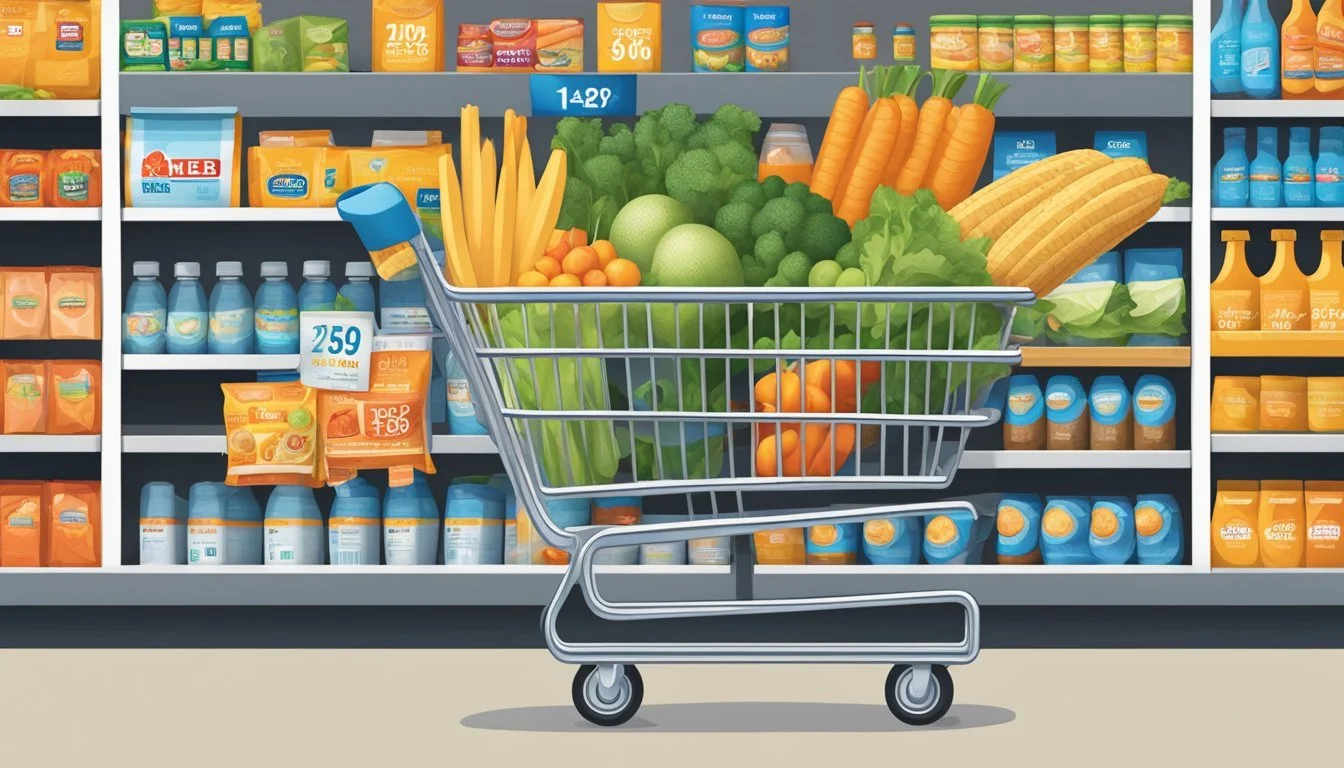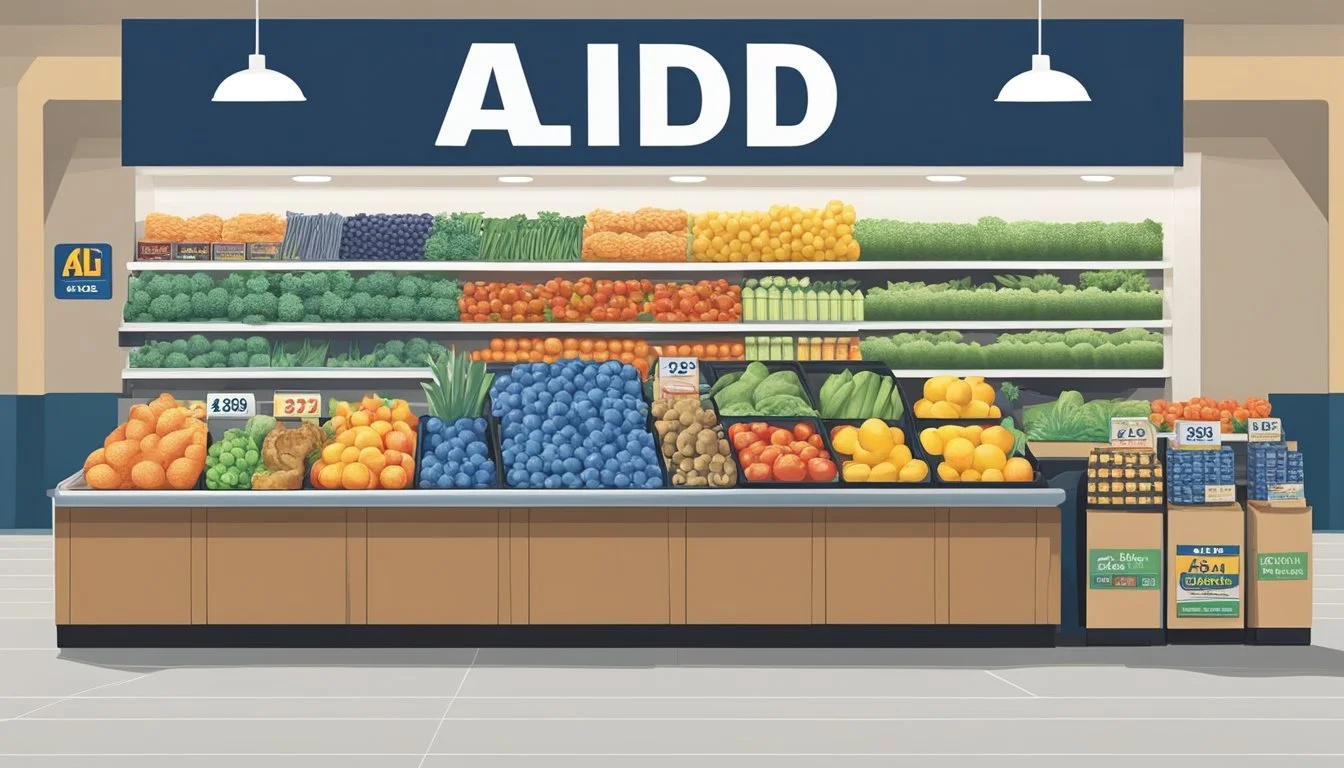Is Aldi Cheaper Than H-E-B?
Comparing Grocery Prices and Value
Part of Our Grocery Store Guide with Details on Aldi Prices and H-E-B Prices
When comparing grocery stores, price is often the foremost concern for consumers. Aldi, known for its cost-saving strategies, offers a smaller selection of mostly private label products and emphasizes efficiency in its operations, a business model that typically allows it to keep prices low. Aldi stores are relatively small with limited options, which not only streamlines the shopping experience but also reduces overhead costs, savings that are passed directly to shoppers.
H-E-B, on the other hand, operates larger stores with a broader product range, including more name-brand items and a stronger focus on customer service. The Texas-based chain is praised for its wide selection of goods and the quality of its store-brand products, but these factors can also lead to higher prices than Aldi's more austere approach.
Given these differences, consumers might find that while Aldi offers better deals on many items due to its business model, H-E-B could be competitive in certain areas, especially for those who value product variety and a more traditional shopping experience. The decision on which is cheaper can depend on the shopper's preferences and the types of products they intend to purchase.
Understanding Grocery Pricing
In the realm of grocery shopping, consumers are perennially seeking methods to trim their grocery bills without compromising on quality or quantity. Supermarkets and grocery stores like Aldi, H-E-B, Costco, Walmart, Kroger, Publix, Target, Sprouts Farmers Market, and WinCo position themselves strategically in the market, each offering a unique combination of value and pricing to attract customers.
Aldi, a discount grocery chain, targets savings-savvy shoppers by providing a smaller selection of primarily private-label goods, which typically allows for lower prices. Their no-frills approach to store design and product selection enables Aldi to keep overhead costs down, a savings that is passed on to consumers in the form of lower grocery bills.
On the other hand, H-E-B has a larger average store size and offers a more extensive range of products, including national brands and a broader selection of goods. While this might suggest a higher pricing model, H-E-B is also known for competitive pricing within its region, highlighting the value proposition it brings to the supermarket sector.
When comparing Aldi with other retailers like Walmart or Target, the pricing model varies—Walmart prides itself on everyday low prices across a wide variety of products, whereas Target positions itself as slightly upmarket with a selection of exclusive brands. Kroger and Publix often feature robust loyalty programs that provide customized savings, while Amazon has capitalized on digital convenience and subscription models to offer value to shoppers.
Ultimately, the disparities in price between these retailers can be attributed to different business strategies, branding, consumer base, and geographical location. As supermarkets navigate the intersection of quality, convenience, and cost, consumers benefit from a competitive market that strives to provide the best grocery prices.
Comparing Aldi and H-E-B
When choosing a grocery store, consumers often consider factors such as price, variety, and brand options. In assessing Aldi and H-E-B, one must closely look at these variables to determine which retailer may suit their shopping needs.
Price Points and Affordability
Aldi is renowned for its low price model. It achieves cost savings through a streamlined store layout and a focus on carrying predominantly store brands. H-E-B, while not categorized strictly as a discount grocer, offers competitive pricing and frequently advertises weekly savings and coupons that appeal to budget-conscious shoppers. In a direct price comparison, Aldi generally offers lower prices on many staple items due to their business model that prioritizes efficiency and cost-saving measures.
Milk: Regular price at Aldi may be lower than H-E-B sale price.
Eggs: Comparison shopping typically shows Aldi with a cost advantage.
Product Selection and Variety
While Aldi may prioritize affordability, it typically offers a more limited selection, with a smaller store footprint that has a curated choice of grocery items. H-E-B boasts a wider selection, including a robust assortment of organic, vegan, and gluten-free options. Shoppers seeking a specific brand or a unique ingredient are likely to find a broader range at H-E-B.
Produce: H-E-B often provides a more extensive variety of fruits and vegetables.
Pasta and Pantry Staples: Both stores carry these items but H-E-B offers a greater number of choices and brands.
Store Brands and Private Labels
Aldi’s approach to private labels is central to their business strategy; a significant majority of products found in Aldi stores are under their own exclusive brands such as SimplyNature, Little Journey, and liveGfree. H-E-B also features its own range of private label products, which are well-regarded in terms of quality and affordability and compete closely with name-brand products. Both retailers emphasize the quality of their store brands, with Aldi's model being almost entirely store brand driven.
Cereal: Aldi’s store brands typically undercut name-brand cereal prices.
Meat: Shoppers may find a wider array and higher-end options at H-E-B, including brand name meats.
Assessing Consumer Experience
In evaluating the consumer experience at Aldi and H-E-B, distinct aspects such as the shopping environment, customer service, and sales promotions are forefront in understanding their competitive landscape.
Shopping Environment
Aldi operates with a no-frills shopping environment, focusing on efficiency. The smaller store sizes and limited product options streamline the shopping process, emphasizing an in-and-out experience. Stores typically use boxes on shelves for easy stocking and offer a layout designed for quick shopping, which may resonate well with customers looking for convenience and speed.
Customer Service and Convenience
H-E-B is known for its strong customer service with more workers available to assist shoppers. Their larger stores and wider product variety, however, might require more navigation. Both stores have loyalty programs—H-E-B offers digital coupons and a points-based loyalty program, while Aldi's approach to customer service is more about the simplicity of the shopping process, sacrificing some of the hands-on service for faster checkout times.
Sales and Promotions
Aldi is celebrated for its low prices and regularly introduces new items through its Aldi Finds promotions, creating a sense of a bargain hunt for customers. H-E-B also offers sales and coupons, both in stores and through their digital platforms, giving customers a chance to find savings. However, Aldi's model tends to attract consumers who prioritise a straightforward, consistently low-priced shopping experience.
Specialty Offerings and Services
Aldi and H-E-B both cater to health-conscious shoppers and offer a diversity of products beyond traditional grocery items. They provide a range of health and dietary products, as well as non-grocery items that include household goods, pet products, and a beauty department.
Health and Dietary Products
Aldi is known for an assortment of health-related products, catering to the needs of gluten-free, organic, and vegan diets. Shoppers can expect to find clearly labeled shelves with a variety of specialty foods. Aldi's focus is on providing cost-effective solutions for health-conscious consumers.
H-E-B specializes in an extensive selection of health and dietary products. Their stores often feature abundant organic options, including fresh produce and packaged goods. For those with specific dietary requirements, H-E-B offers a wider variety of gluten-free and other health-focused food items compared to many grocery chains.
Non-Grocery Items
Aldi has a limited but curated selection of non-grocery items that rotate weekly under the "Aldi Finds" section. Here, customers can discover a range of household goods, pet products, and paper products at competitive prices.
H-E-B boasts a robust beauty department with both up-market and conventional brands. Their non-grocery offerings extend to a comprehensive array of household goods, pet supplies, and health and wellness products. The variety and quality of non-grocery items at H-E-B are indicative of their commitment to being a one-stop shop for consumers' diverse needs.
Brand and Marketing Strategies
Successful grocery chains like Aldi and H-E-B leverage distinct branding and marketing strategies to attract and retain customers. Both use these tools to distinguish themselves within a competitive marketplace.
Advertising and Branding
Aldi utilizes a straightforward branding approach, emphasizing the simplicity and cost-effectiveness of its offerings. The company operates on a "less is more" philosophy, extending to its store design and product selection. Aldi's advertising campaigns often highlight the lower prices of their products compared to competitors, supported by slogans that appeal to savvy shoppers. Particularly in its US locations, this strategy has resonated with cost-conscious consumers.
In contrast, H-E-B focuses on a localized marketing approach. Its slogans and branding emphasize community and customer service, creating a strong emotional connection with its customers. Through its advertising, H-E-B showcases a wide variety of products, including more upscale options and locally sourced items, which cater to the diverse needs of its customer base. In fact, according to Market Force Information's annual survey of thousands of shoppers, H-E-B was named the top U.S. grocery retailer in 2020. This accolade is a testament to the effectiveness of H-E-B's targeted marketing and strong brand presence in the United States.
Aldi's and H-E-B's Market Presence
Aldi and H-E-B have distinctly different market presences in the United States, with Aldi's expansive national footprint contrasting with H-E-B's regional concentration in Texas.
National and Regional Footprints
Aldi operates with a growing national presence in the United States, featuring a business model focused on offering limited options, predominantly private labels, and keeping store sizes small to ensure low prices. By strategically expanding its store count, Aldi is not only strengthening its market share in the grocery sector but is also becoming an increasingly familiar sight to consumers across various states.
H-E-B, on the other hand, has a concentrated regional footprint, specifically dominating the Texas market, where it is headquartered. Despite being a regional retailer, H-E-B maintains a strong market position, illustrating its success through significant market basket growth and customer loyalty within its operational domains.
Aldi United States Expansion
Presence: National
Stores: Thousands across the US, with plans for further expansion.
Growth Strategy: Opening 800 more locations in the next four years.
H-E-B Texas Dominance
Presence: Regional (Texas)
Stores: On average, larger than Aldi
Market Position: Substantial consumer transaction growth, indicating an increase in market share within Texas.
Economic Analysis and Trends
This section provides a comprehensive overview of the economic factors influencing the grocery sector and evaluates the specific competitive dynamics between Aldi and H-E-B.
Inflation and Impact on Grocery Sector
Inflation has a palpable effect on the grocery industry, exerting upward pressure on grocery bills. As consumer purchasing power diminishes, they often seek out retailers like Aldi, known for lower prices, to stretch their dollar further. This trend typically results in increased foot traffic at discount grocers. Conversely, supermarkets such as H-E-B, while competitive, may need to employ strategic pricing and marketing to maintain their market share in the face of tightening consumer budgets.
Trends affecting the grocery sector due to inflation:
Shift in consumer behavior towards discount stores.
Variable price adjustments across the board.
Increased demand for budget-friendly private labels.
Competitive Analysis
A comparative assessment of Aldi and H-E-B reveals divergent strategies. Aldi has established a foothold through limited product selection, small store footprint, and aggressive pricing. They experienced an 8% rise in average transactional value indicating robust consumer patronage. H-E-B, with a broader selection and larger store sizes, recorded a notable 12% growth in average consumer transactions.
Competitive metrics (data from recent reports):
Aldi's annual sales sit at approximately $27 billion with a 2.1% grocery retail market share.
H-E-B, while regionally focused in Texas, leads in consumer transaction growth among other chains.
Supermarket competition extends beyond Aldi and H-E-B; chains like Walmart, Costco, and Kroger influence market trends by leveraging scale, operational efficiency, and digital platforms to capture consumer interest. The entry of digital giants like Amazon into the physical grocery space further intensifies the competition, constructing a multifaceted marketplace where maintaining the lowest prices without sacrificing quality is pivotal.
Conclusion
When comparing grocery prices, Aldi tends to be a strong contender for budget-conscious shoppers. The store's focus on private labels and smaller store sizes allows them to offer lower prices. They typically have the advantage on many common items when compared to non-sale prices at other grocery outlets.
H-E-B, on the other hand, offers a different experience with a larger average store size and a wider variety of products, which might appeal to consumers looking for specific brands or products that Aldi does not stock. While H-E-B may have higher prices on some items, they also provide sales and coupons that can reduce the overall bill.
It's important to note that the cheapest grocery option can depend on individual shopping habits. Customers loyal to specific brands might find better value at H-E-B, while those flexible with brands and looking for basics could save more at Aldi. Additionally, Aldi's "Aldi Finds" section can offer discounts on non-grocery merchandise.
To summarize, both Aldi and H-E-B can be cost-effective depending on the shoppers’ needs and preferences. Careful consideration of sales, product selection, and brand loyalty will guide consumers to the store that best matches their budget and shopping criteria.








